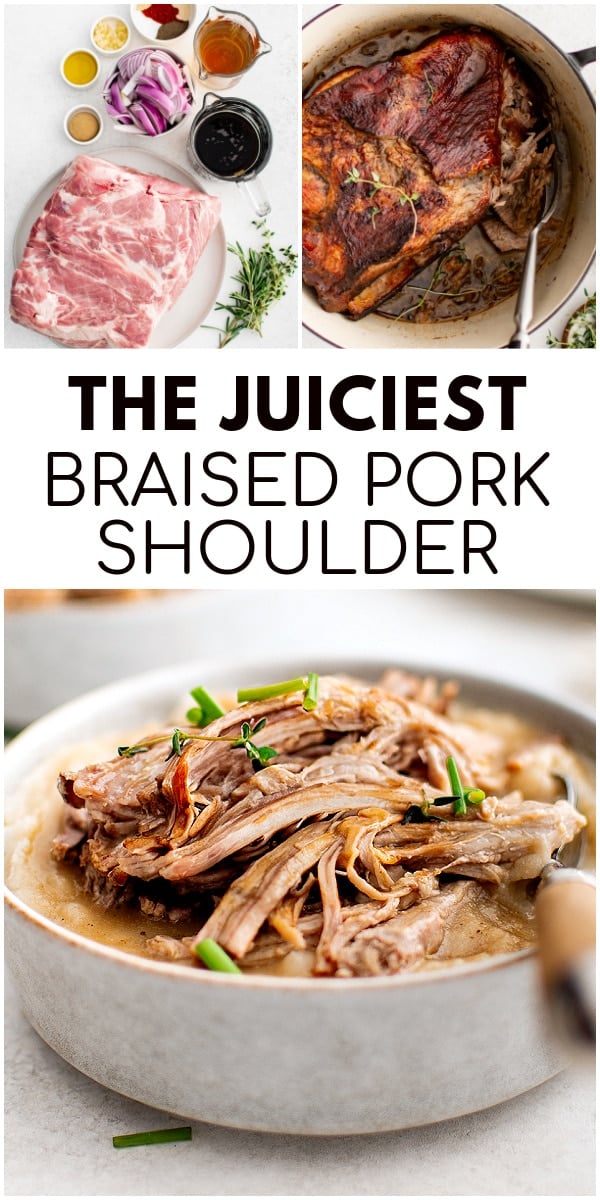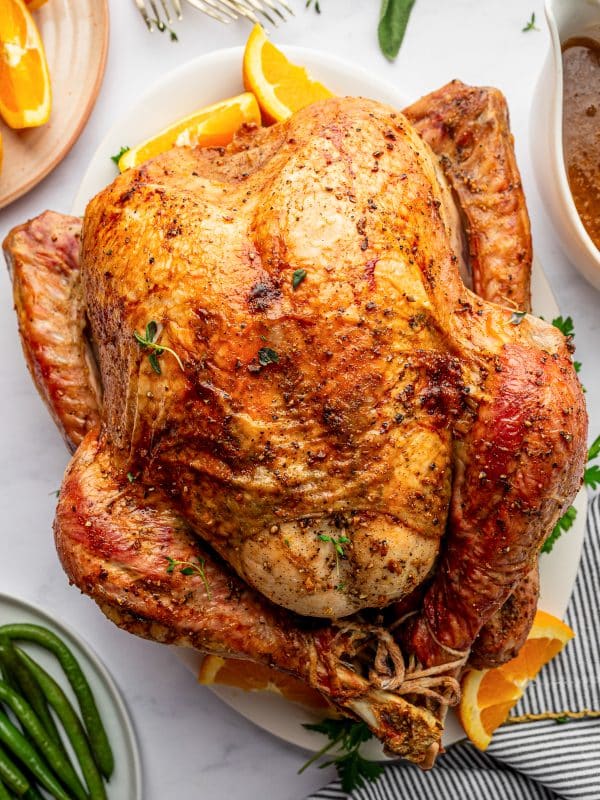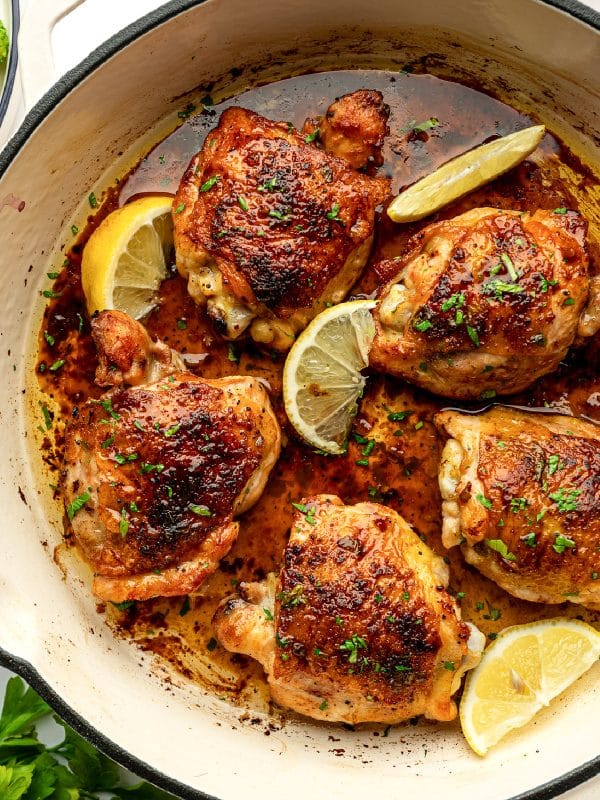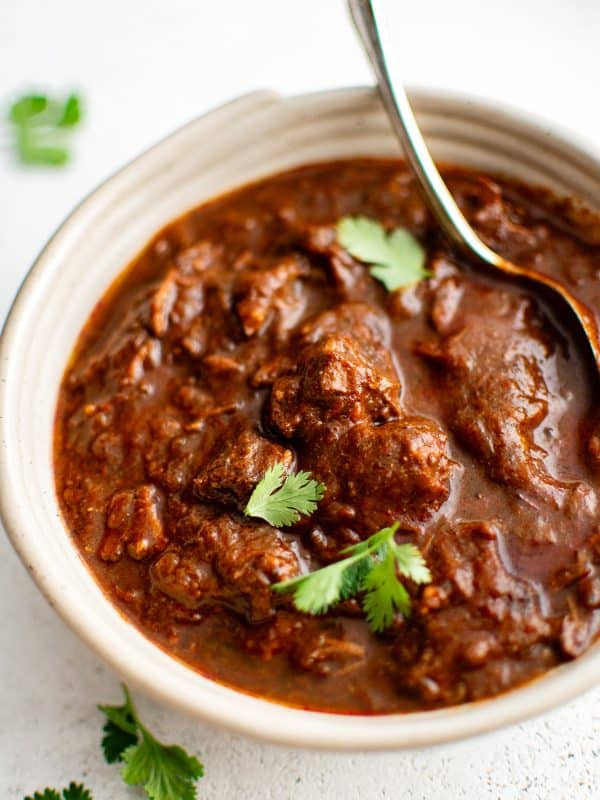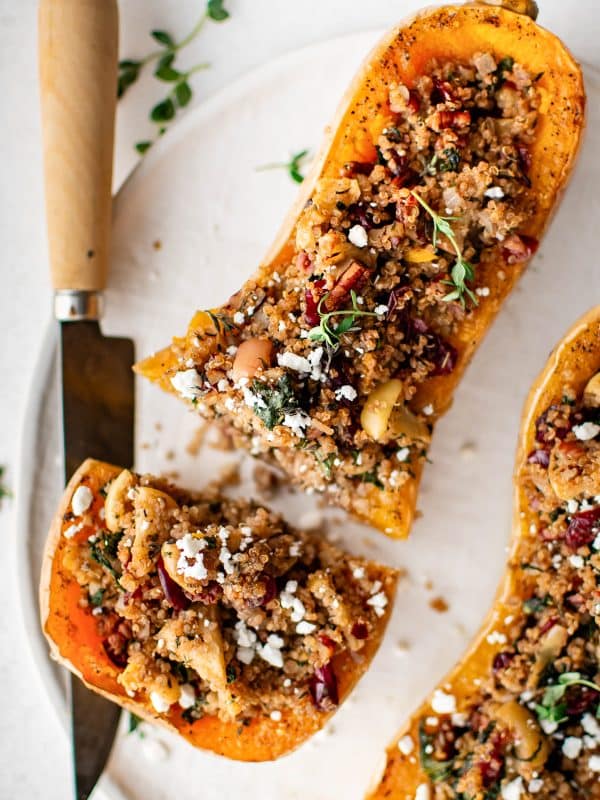This post may contain affiliate links. See my disclosure policy.
This Braised Pork Shoulder recipe is made with tender pork cooked low and slow in a flavorful combination of apple cider, beer, onions, garlic, and fresh herbs. It’s an easy one-pot dinner packed with cozy, comforting flavors. It’s the absolute best way to turn a big hunk of pork shoulder into juicy shreds of delicious meat.
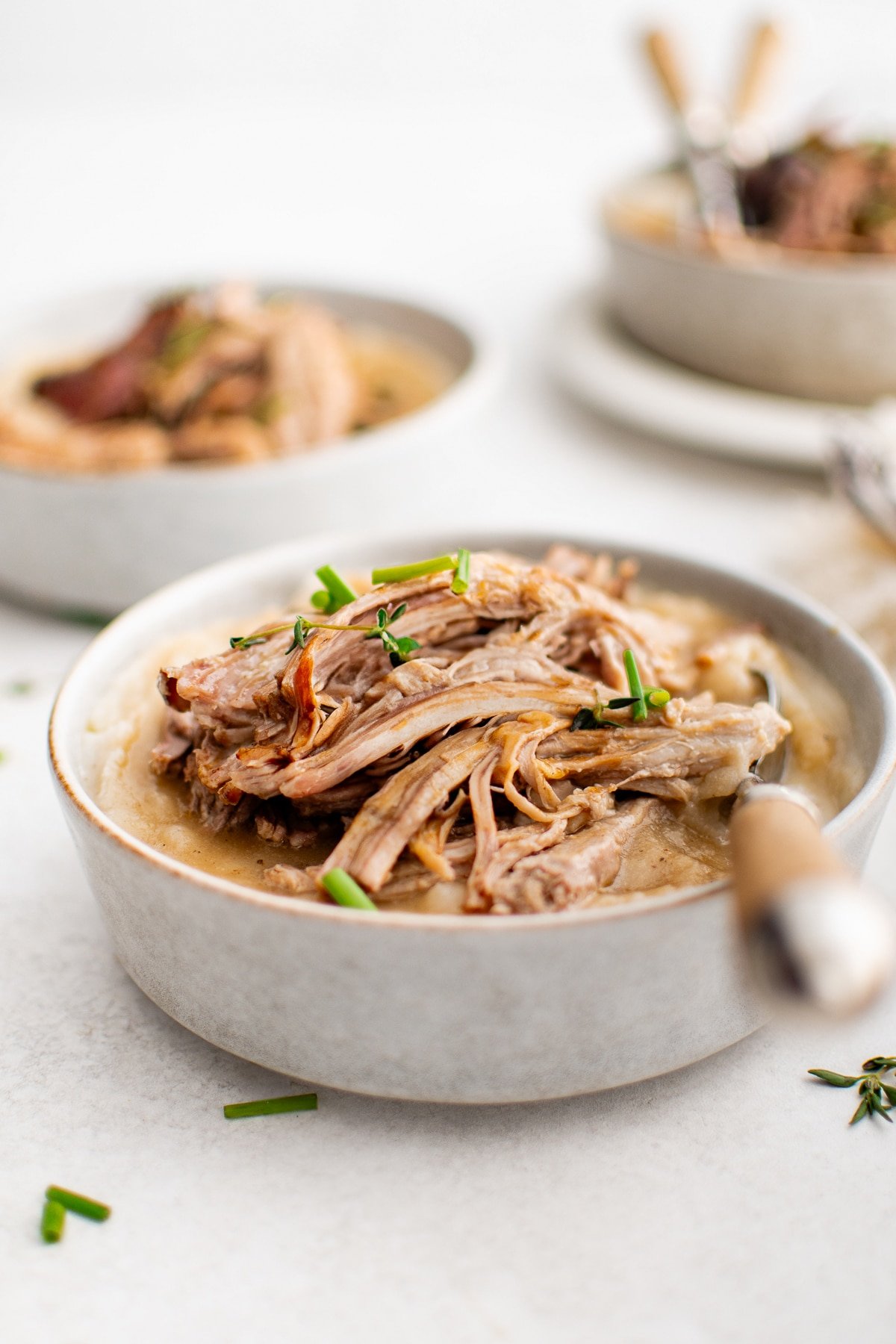
Beer and Apple Cider Braised Pork Shoulder
If you haven’t experienced the magic of slow-braised pork shoulder, you’re in for a treat! Pork is simmered in a rich blend of beer, apple cider, onions, garlic, and herbs, resulting in juicy and succulent meat that practically melts in your mouth. If you’re new to braising, there’s nothing fancy or complicated about it. It’s a cooking technique that combines dry heat (searing) and wet heat (with liquid) to break down huge hunks of tough and chewy meat. It is my favorite way to cook pork shoulder, and it may become your favorite, too!
In this post, you’ll find everything you need to know to make delicious beer and apple cider-braised pork shoulder, including tips, ingredient substitutions, and answers to frequently asked questions. Let’s get started!
Table of Contents
Before You Start: Key Tips For Success
Use this recipe as a guide. It’s pretty hard to mess up this recipe. So, feel free to use different seasonings, braising liquids, and veggies. Toss in some baby potatoes, chunks of carrot, and celery to make it a complete meal.
We’re cooking low and slow. It takes about 4.5 to 5 hours to braise a 5-pound pork shoulder. This includes prep, slow cooking, and resting. It’s the perfect cozy, comforting dinner for weekends or meal prep.
Use a Dutch oven. We all know I love a good Dutch oven recipe, and this braised pork shoulder is no exception. For a 5-pound roast, a 7-quart Dutch oven is ideal for even heat distribution and keeping moisture locked in. A large oven-safe pot with a tight-fitting lid can work if you don’t have one.
Sear for flavor. Searing the pork before braising builds a deep, savory, caramelized crust on the surface of the meat and leaves behind golden brown bits (called fond) on the bottom of the pot. When you add the aromatics and deglaze with beer and cider, the fond dissolves into the liquid, becoming the backbone of the braising sauce.
The braising liquid matters. This recipe uses beer and apple cider, a delicious balance of savory and sweet flavors that each complement the richness of pork. The total amount of liquid should equal about 3 cups (reduced to approximately 2 to 2½ cups after deglazing and simmering). This amount of liquid should reach halfway up the sides of the meat – the sweet spot for braising.
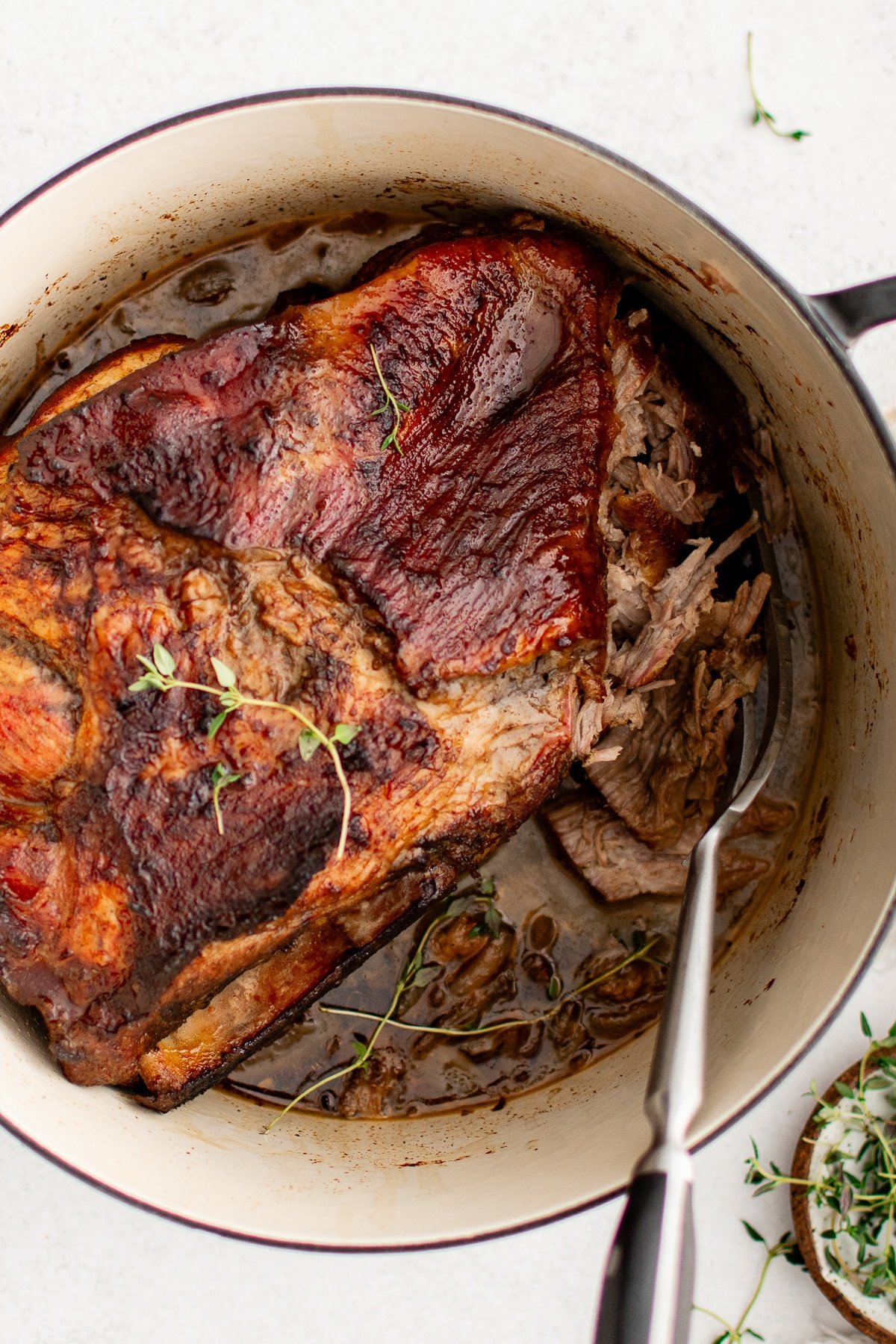
How Braising Works to Cook Perfectly Tender Pork Shoulder
Braising is a cooking technique that combines dry and wet heat to break down tough cuts of meat or vegetables, making them melt-in-your-mouth tender and intensely flavorful. Classic examples include dutch oven pot roast, braised short ribs, Coq au vin, and Osso buco. Here’s how it works:
- Sear first (dry heat): For this recipe, a 5-pound hunk of pork shoulder is seasoned and seared in a small amount of oil to create a rich caramelized crust and add flavor.
- Then add liquid (moist heat): This recipe uses beer and apple cider, but broth, wine, tomatoes, and (even) milk are all options. Add just enough braising liquid to reach halfway up the sides of the meat.
- Cover and cook low and slow: Slow cooking breaks down the tough connective tissue and infuses the meat with unbeatable flavor.


This is What You Need to Make It
Just want the recipe? Check out the recipe card below for step-by-step instructions with images.
You will need the following ingredients to make this Dutch oven braised pork shoulder:
- Pork Shoulder (aka pork butt): Pick a roast that’s in the ballpark of 5 pounds. A little over is ok since you’ll want to trim excess fat before seasoning. Bone-in or boneless both work. Pork loin, pork tenderloin, and pork chops are not recommended.
- Brown Sugar and Seasonings: We’re coating the pork in a dry rub made from a mixture of brown sugar, smoked paprika, garlic powder, onion powder, salt, and black pepper. It’s simple, but delicious.
- Aromatics: This recipe includes sliced red onion and fresh minced garlic. Add more garlic for extra garlicky braising liquid and double the onion if you’re a fan of jammy, buttery onions so soft they practically dissolve in your mouth.
- Braising liquids: This recipe uses apple cider (please, not apple cider vinegar) and beer. The apple cider can be non-alcoholic or hard cider. The best type of beer to use is a Brown Ale, like Newcastle Brown Ale, Amber Ale, or Wheat Beer (such as Hefeweizen). Do not use super hoppy IPAs as they can turn bitter when cooked down. To make this recipe alcohol free, swap the beer for beef broth.
- Fresh herbs: Fresh rosemary and thyme are added with the braising liquid, helping cut through the rich flavors of the pork.
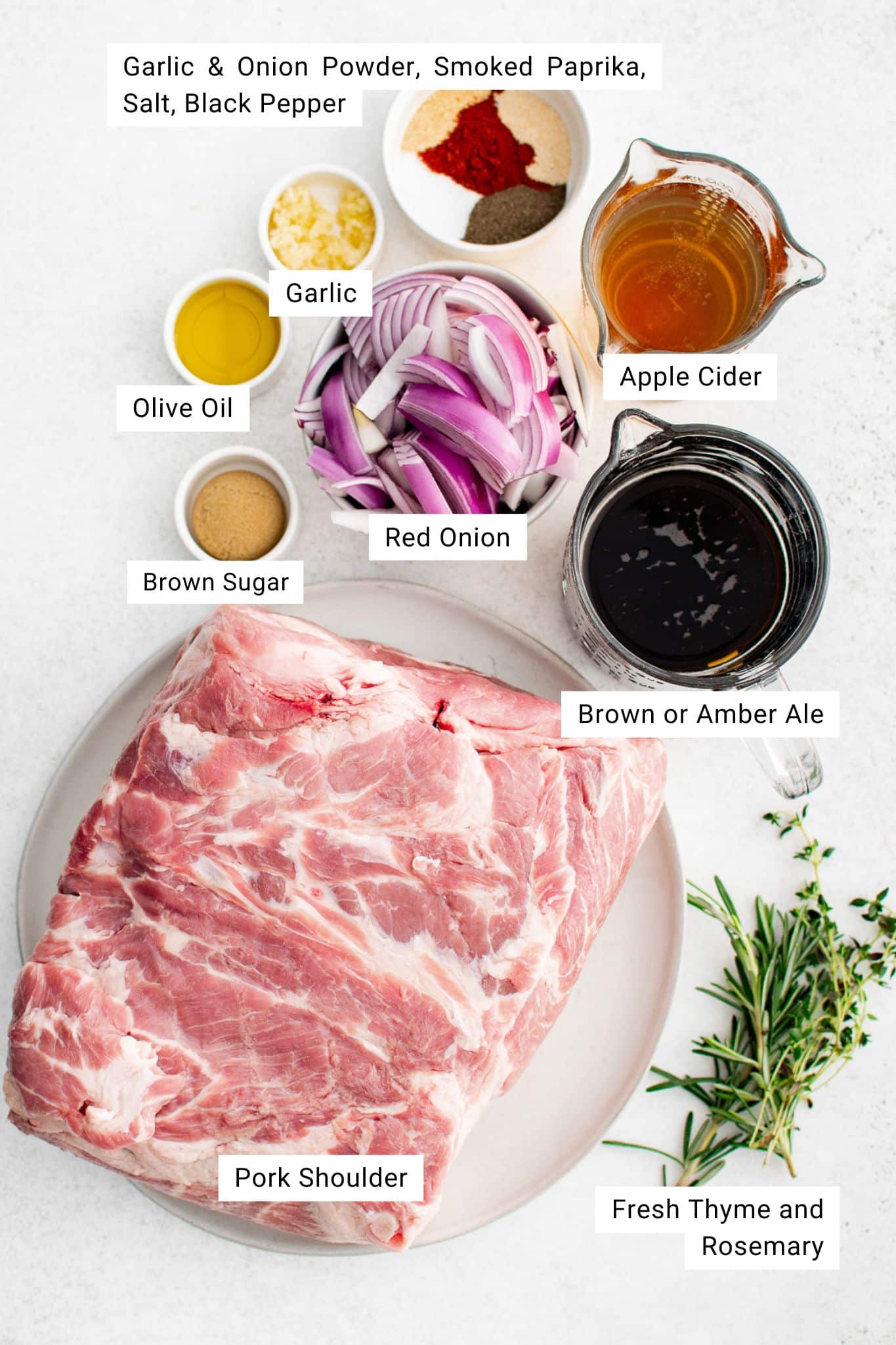
Flavorful Variations
- Fall Flavors: A little like this pork chops with apples and onions recipe, you can infuse this recipe with cozy autumn vibes with apples and whole spices like cinnamon sticks, cloves, or start anise (you only need one of each!)
- Veggies: Make this into a hearty and complete meal with carrots, parsnips, baby potatoes, sweet potatoes, or butternut squash. Add them in the beginning, or in the last 1.5 hours of cooking. Just be sure your pot or Dutch oven is large enough to handle the additional volume.
Answers to Frequently Asked Questions
In general, a 5-pound roast takes approximately 3.5 to 4 hours in the oven (if you’re using bone-in pork shoulder, it may be closer to the 4 hour mark). The pork should shred easily with two forks. If it resists when pulled, it needs more time. For best results, the internal temperature should be around 190–205°F as measured by a digital meat thermometer. Although pork is safe to eat at 145°F, the connective tissue needs longer to break down.
You can sear the pork and make the sauce in a large skillet (remember to save the brown bits!), then transfer everything to a large baking dish and braise it from there. The baking dish will need to have enough room for the braising liquid, and a tight-fitting oven-proof lid. If you don’t have a lid, cover tightly with aluminum foil.
Yes. For best results, complete steps 1-7 of instructions in the recipe card below using a large heavy-bottomed skillet. Once the sauce is made and the pan is deglazed, transfer to a large slow cooker (a 7-quart Crockpot or larger) and top with the seared pork shoulder. Tuck the dried herbs beside the pork, and cook on LOW for 8-9 hours. For more tips check out my Slow Cooker Pork Shoulder Recipe.
Yes! Braised pork is even better the next day. Store it in the cooking liquid, refrigerate overnight, and reheat gently on the stove or in the oven.


Have any questions? Drop me a message in the comment section below! I’m happy to help. And, if you enjoy this beer braised pork shoulder recipe, please rate it with some STAR LOVIN’ so other readers know to try it too! Tag me at #theforkedspoon. I’ll be sure to share! Thank you!
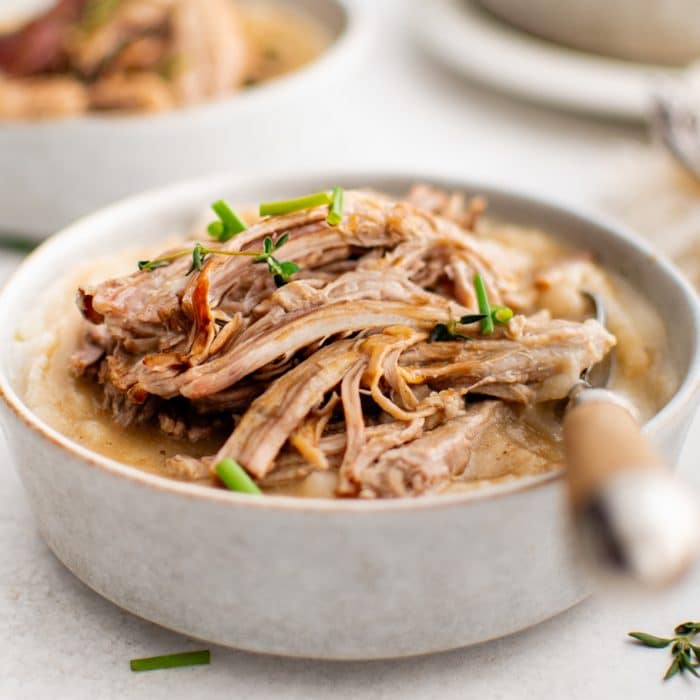
Braised Pork Shoulder Recipe
Ingredients
- 4-5 pound pork shoulder, bone-in or boneless
- 1 tablespoon brown sugar
- 1 teaspoon smoked paprika, optional
- 1 teaspoon garlic powder
- 1 teaspoon onion powder
- 1 teaspoon salt
- 1 teaspoon black pepper
- 2 tablespoon olive oil
- 1 large onion, sliced
- 3 cloves garlic, minced
- 12 ounces beer, (1½ cups) see notes
- 12 ounces apple cider, (1½ cups) see notes
- 2 sprigs fresh thyme
- 2 sprigs fresh rosemary
Instructions
- Preheat the oven to 325°F (163°C).
- Prepare the seasoning mix. In a small bowl, mix together the brown sugar, smoked paprika (if using), garlic powder, onion powder, salt, and black pepper.
- Prepare the pork shoulder. Trim the pork shoulder of any thick layers of fat and pat the pork shoulder dry with paper towels. Rub the pork with the spice mixture, making sure to cover the sides and crevices.
- Rest for 30 minutes.
- Sear the pork shoulder. Heat the olive oil in a large Dutch oven set over medium-high heat. Sear the pork on all sides, about 3-4 minutes per side, until a golden-brown. Remove the pork to a clean plate and set aside.
- Sauté the aromatics and deglaze the pot. Reduce the heat to medium. Add the sliced onion and minced garlic to the pot, stirring frequently. Sauté for about 4-5 minutes, or until the onions become translucent and the garlic is fragrant, being careful not to burn the garlic. Use a wooden spoon or spatula to scrape up the browned bits from the bottom of the pot—this is called deglazing, and it’s essential for building deep flavor.
- Next, slowly pour in the beer and apple cider, stirring as you go. The liquid will bubble up and help loosen any remaining brown bits. Let the mixture come to a gentle simmer, then reduce the heat to low.
- Add the pork and herbs. Nestle the seared pork shoulder back into the pot. Tuck fresh thyme and rosemary sprigs on each side of the meat, partially submerging them in the liquid.
- Braise in the oven. Cover the Dutch oven with a lid. Transfer it to the preheated oven and braise for 3½ to 4 hours, basting every hour. The pork is done when it’s fork-tender and easily pulls apart.
- Rest and shred: Remove the pork from the pot and let it rest for 10-15 minutes. Shred the meat using two forks or slice it as desired.
- Strain and simmer the braising juices. Strain the braising liquid into a saucepan. Simmer gently until it's reduced to your preference. Serve the pork with the juices and cooked onions over buttery mashed potatoes, roasted vegetables, or warm crusty bread.
Notes
- Store leftovers in an airtight container with some of the braising liquid to keep it moist. Refrigerate for up to 4 days. Reheat gently on the stovetop or in the microwave, adding a splash of broth or cider if needed to loosen the meat.
- Freeze leftover pork in portions, along with some of the braising liquid, for up to 3 months. Thaw overnight in the fridge, then reheat on the stovetop, covered, until warmed through.
Nutrition
Nutrition information is automatically calculated, so should only be used as an approximation.
